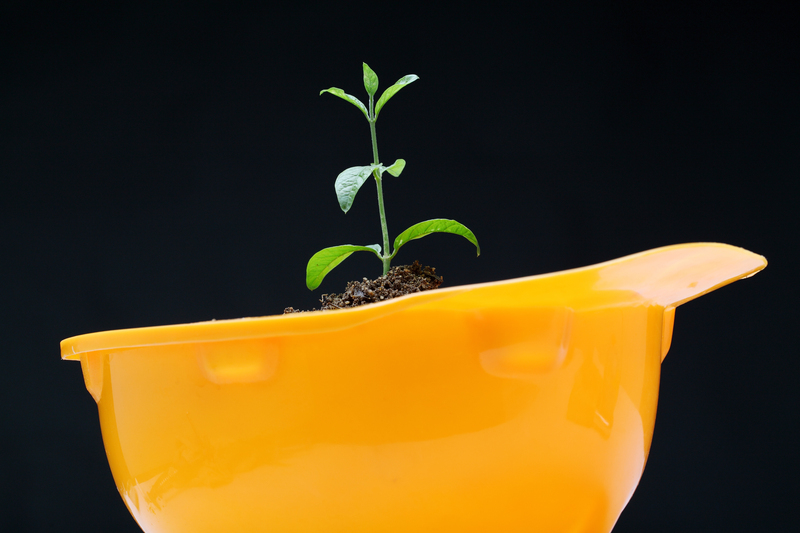The Do's and Don'ts of Cookware Disposal: A Definitive Guide
When it's time to refresh your kitchen or declutter your cabinets, you might face the tricky question: How should you properly dispose of old cookware? If you're unsure whether to toss that old frying pan in the trash, donate it, or recycle it, you're not alone. Disposing of cookware responsibly is essential for environmental sustainability and can even benefit your community. This ultimate guide will walk you through the best practices (Do's) and common mistakes (Don'ts) for cookware disposal, ensuring you make informed decisions for both your home and the planet.

Why Proper Cookware Disposal Matters
Many types of cookware are made with materials that do not easily decompose or may release toxins if disposed of improperly. By learning the *correct methods for disposing of cookware*, you can:
- Reduce landfill waste
- Prevent environmental contamination
- Recycle valuable resources
- Support charitable causes
The Do's of Proper Cookware Disposal
Before you decide to throw away your old kitchenware, explore these responsible options:
1. Assess Condition for Reuse or Donation
Is your cookware still functional? If your pots or pans have only minor cosmetic wear, consider donating them to:
- Local charities and thrift stores
- Nonprofit organizations supporting low-income families
- Community centers, shelters, or soup kitchens
2. Check for Local Recycling Programs
Most cookware--including stainless steel, aluminum, copper, and even cast iron--can be recycled. Contact your municipal recycling center to ask about:
- Scrap metal drop-off locations
- Household goods collection events
- Special instructions for nonstick or coated cookware
3. Repurpose Cookware for Creative Uses
Before disposal, consider upcycling old cookware into:
- Planters or garden beds
- Decorative wall art
- Storage containers
- Candle or soap molds
4. Take Advantage of Manufacturer Take-Back Programs
Some cookware brands offer take-back or recycling programs for their old products. Visit the manufacturer's website or contact customer service to see if they:
- Accept old pans for recycling or refurbishment
- Offer trade-in discounts on new purchases
5. Schedule a Hazardous Household Waste Pickup (If Applicable)
If your cookware has a nonstick coating (like Teflon), check with your waste management authority. Some coatings contain chemicals (such as PTFE or PFOA) that may require special disposal through a hazardous household waste program.
The Don'ts of Cookware Disposal
Understanding what not to do is just as important as knowing best practices. Avoid these common cookware disposal mistakes:
1. Don't Throw Cookware in Your Household Trash
Standard garbage collection is not equipped to handle most cookware materials, especially metals and coated nonstick items. Disposing of them in your trash contributes to landfill waste and may expose the environment to harmful chemicals.
2. Don't Assume All Cookware Is Readily Recyclable
While metal cookware is often recyclable, items with plastic handles, glass lids, or nonstick coatings may be rejected by standard recycling programs. Check your community's guidelines before placing cookware in recycling bins.
3. Don't Pour Out Cookware Chemicals
Never dump leftover nonstick coatings, cooking oil, or cleaning chemicals down the drain or onto the ground. Follow local disposal guidelines for household chemicals.
4. Don't Burn or Incinerate Old Cookware
Burning cookware--especially nonstick or coated pans--can release toxic fumes and contribute to air pollution. Metal cookware does not burn efficiently and creates safety hazards.
5. Don't Discard Glass Lids with General Recyclables
Glass lids are often made from tempered, heat-resistant glass, which cannot be melted with regular glass recyclables. Most curbside programs do not accept cookware glass, so look for specialty recycling or reuse options.
Cookware Disposal by Material Type
Knowing the material composition of your cookware is crucial for proper disposal. Here's a closer look at how to dispose of different types of cookware:
Stainless Steel Cookware
- Highly recyclable, but check for plastic or silicone handles. Remove non-metal parts before recycling.
- Scrap metal yards or recycling centers will often accept these items.
Aluminum Pots and Pans
- Recycle at scrap metal facilities or specialty recycling events.
- Separate from other household recyclables.
Cast Iron Skillets
- Long-lasting and ideal for donation or upcycling.
- If recycling, remove non-metal parts and check with scrap metal dealers.
Copper Cookware
- Highly valuable for recycling--donate or sell to scrap yards.
- May earn cash back due to copper value.
Nonstick or Teflon-Coated Cookware
- Check with local authorities--coatings can complicate recycling.
- Use hazardous waste programs if coatings contain PFOA or PFAS.
Glass Lids
- Not accepted in regular glass recycling.
- Donate if in good condition or dispose of through specialty programs.
Frequently Asked Questions about Cookware Disposal
Can I put old pots and pans in the recycling bin?
Not typically. Recycling bins are meant for specific household items (like cans and bottles), not larger metal objects. Bring cookware to a designated scrap metal recycling facility or community recycling event.
What should I do with nonstick cookware that's scratched or worn out?
When your nonstick pans are damaged, avoid donation for safety reasons. If recycling is not available, dispose through hazardous waste collection, or look for mail-in recycling options from cookware brands.
Are there eco-friendly ways to replace or upgrade cookware?
Yes! Consider purchasing sustainable cookware brands that offer recyclable materials and take-back programs. Choosing high-quality items also extends product life and reduces future waste.
Who accepts donated cookware?
Many organizations accept gently used cookware, including:
- Habitat for Humanity ReStores
- Goodwill and Salvation Army thrift stores
- Local food banks, shelters, and community kitchens

Tips for Reducing Future Cookware Waste
- Invest in durable, quality cookware you won't need to replace quickly.
- Maintain your cookware by following manufacturer cleaning and care instructions.
- Participate in community swaps or resale platforms to trade or sell unwanted items.
- Research recycling options before making new purchases--some brands are more eco-friendly than others.
Conclusion: Dispose of Cookware Responsibly
Adopting the do's and don'ts of cookware disposal ensures that your old pots, pans, and utensils are handled in a way that protects the environment, supports your community, and keeps unnecessary items out of landfills. By following *these easy steps for cookware disposal*, you're doing your part to promote a sustainable kitchen and a healthier planet.
Remember: Reuse, recycle, upcycle, or donate whenever possible--and avoid sending your cookware straight to the landfill! With these helpful tips, you can make eco-friendly cookware disposal part of your household routine.